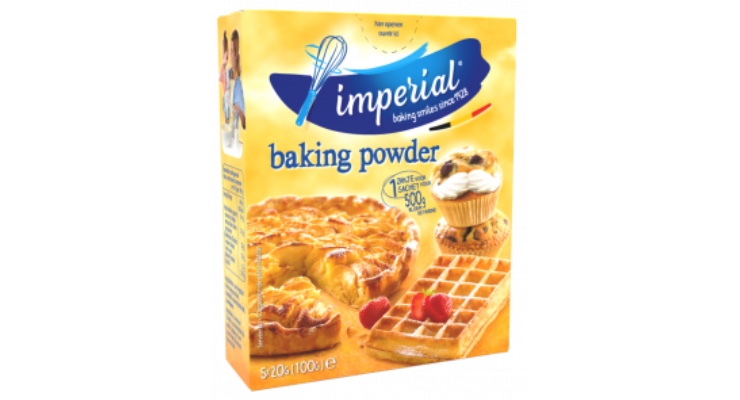Baking Powder vs. Baking Soda: Understanding The Differences And Uses
In the world of baking, baking powder and baking soda are indispensable. Despite having a similar appearance, they differ chemically and in their applications. Baking powder and baking soda are used in baking to make cakes, muffins, and other baked goods rise. Knowing how they function and when to use them will help you consistently produce wonderful baked goods.

Baking Powder
Let's start by discussing baking powder. Baking powder is a leavening agent that helps baked goods rise. It is made up of a mixture of baking soda, an acid, and a moisture-absorbing agent. Baking soda and acid react when baking powder is added to a dough or batter, creating carbon dioxide gas as a result. This gas causes the dough or batter to rise.
Cakes, cookies and breads can all benefit from using baking powder, which is a practical and adaptable product. Baking powder is particularly helpful in recipes that don't contain acidic ingredients such as buttermilk, lemon or yogurt, which are needed to activate the baking soda.
- Baking powder chemical composition: Baking soda is combined with one or more acidic salts, such as cream of tartar or sodium aluminium sulphate, to create baking powder.
- When combined with liquid, the mixture of basic and acidic substances reacts to form carbon dioxide gas.
- Recipes without an acidic element call for baking powder.
- Baking powder comes in single acting and double acting varieties. Whereas double acting baking powder reacts with liquid once when heated in the oven. Single acting baking powder reacts with liquid as soon as it is mixed.

Baking Soda
Let's now discuss baking soda. Baking soda, usually referred to as sodium bicarbonate. It is a leavening chemical that aids in the rising and fluffing of baked goods. When it combines with an acid, it releases carbon dioxide gas, which is how it functions. When baking soda is used in recipes with acidic components like buttermilk, yogurt, or lemon, the baking soda is activated and the desirable rising effect is produced.
A little baking soda goes a long way because it is a strong leavening agent. It is crucial to use the proper amount of baking soda in a recipe since too much can give baked goods a soapy texture and bitter taste.
Thus, when should you use baking soda and when baking powder? In general, baking soda should be used in recipes that call for acidic components and baking powder in those that don't. To obtain the desired rising effect, you can alternatively combine baking soda and baking powder in a recipe.
- Baking soda: Sodium bicarbonate is its chemical name (NaHCO3)
- It is a base since its pH is higher than 7.
- Baking soda releases carbon dioxide gas when combined with an acid, such as yogurt or lemon juice. Baked items rise as a result of this gas.
- When making recipes that call for an acidic component, baking soda should be utilised.
- Due to its capacity to combine with acids to produce carbon dioxide, which can aid in the removal of stains and debris, baking soda is occasionally used as a cleaning agent.
Interesting Notable Historical Facts About Baking Powder And Baking Soda
1. Baking powder was created in the middle of the 19th century as a more practical substitute for yeast, which at the time was the main leavening agent used in baking. Due to its simplicity of use and repeatable results, English scientist Alfred Bird's invention of the first baking powder in 1843 immediately gained popularity.
2. Baking soda, also known as sodium bicarbonate, has been used for thousands of years for a number of things, such as as a medication, a food ingredient, and a cleaning agent. From the early 19th century, it has been used in baking after being first discovered by French scientist Nicolas Leblanc in the late 18th century.
3. Baking soda and baking powder were both bulk-sold in the middle of the 19th century and frequently contained contaminants that could lower the standard of baked goods. The invention of industrial manufacturing techniques in the late 19th century transformed the manufacture of baking powder and baking soda by enabling the production of more dependable and pure goods.
4. Nowadays, a wide range of baked items, including cakes, cookies, breads, and more, frequently contain baking powder and baking soda. They continue to play a crucial part in the world of baking and are necessary ingredients in many classic and contemporary recipes.
Tips For Using Baking Soda And Baking Powder:
- Use the precise quantity called for in the recipe. The texture and flavour of the completed product might be impacted by using too much or too little.
- Before adding any liquid, thoroughly combine baking soda and baking powder with the dry ingredients.
- A recipe typically contains both acidic and non-acidic components if it calls for both baking soda and baking powder.
- When using baking soda and baking powder, it's crucial to verify the expiration date on the bottle as they can lose their effectiveness over time.
- To avoid moisture getting in and causing them to clump, store both baking soda and baking powder in a cold, dry location with a tightly shut cover.


